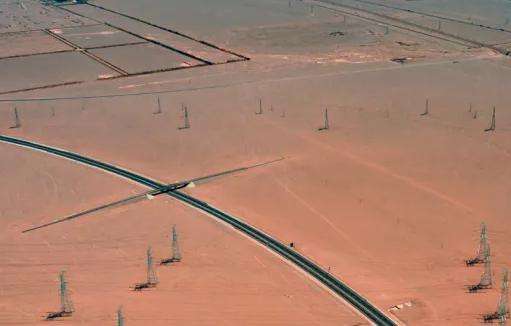Ordinary taxpayers sell tap water with a tax rate of 13%, but they can also choose a simple method to calculate the tax at a rate of 3%.
1. Article 2 of “Revised Provisional Regulations of the People's Republic of China on Value-Added Tax” Value-added tax rate:
(1) Taxpayers sell or import goods. , unless otherwise specified in this section
p>
Except for items (2) and (3), the tax rate is 17%.
(2) Taxpayers who sell or import the following products are subject to a tax rate of 13%:
1. Cereals, edible vegetable oil;
2. . Tap water, heating, air conditioning, hot water, coal gas, liquefied petroleum gas, natural gas, biogas, coal products for residential use;
3. Books, newspapers, magazines;
< p>4. Animal feed, chemical fertilizers, pesticides, machineryagricultural, agricultural films;5. Other property specified by the Council of State.
2. “Opinion of the Ministry of Finance and the National Tax Administration on the policy of low VAT rates and simplified VAT collection for certain goods” (Finance and Taxation No. 20099): General taxpayers sell the following goods self-produced, you can choose to calculate and pay value-added tax at the rate of 6% according to the simple method: 1. Electricity produced by small hydropower units at or below the county level. Small hydropower units refer to small hydropower units with an installed capacity of less than 50,000 kilowatts (including 50,000 kilowatts) built by various investment entities. 2. Sand, earth and stone used in construction and production of building materials. 3. Bricks, tiles and lime (excluding solid clay bricks and tiles) producedcontinuously from sand, soil, stone or other self-extracted minerals. 4. Biological products made from microorganisms, microbial metabolites, animal toxins, human or animal blood or tissues. 5. Tap water.
6. Commercial concrete (limited to cement concrete produced with cement as raw material). Once a general taxpayer has chosen the simplified method to calculate and pay VAT, it cannot be changed within 36 months. “Notice of the Ministry of Finance and the State Administration of Taxation on Simplification of Value-Added Tax Collection Rate Policies” (Finance and Taxation No. 201457): 2. Article 2 of Document No. 9 of Finance and Taxation (2009)
(3) and 3 The article “according to the tax rate of 6%” is adapted to “according to the tax rate of 3%” .
Small hydroelectric production sells self-produced electricity
Reanswer:
ー Under normal circumstances, the tax rate for hydropower is 17%. However, it should be reduced to 16% after May 1, 2018
2 According to the document “Finances and Taxation [No. 200?9], general taxpayers sell
it. following self-produced goods: You can choose to calculate and pay value-added tax at the rate of 6% according to the simple method: 1. Electricity produced by small hydropower units at the county level and below. Small hydroelectric units
refer to small hydroelectric units with an installed capacity of <50,000 dry watts (including 50,000 kilowatts) built by various investment entities
>< p>Bit. Businesses choose to request simplified collectionIf the method is adopted, input tax will not be deducted
. However, you can issue a special VAT invoice yourself.
The facial tax rate is 6 % and the buyer also calculates the input tax deduction based on the tax rate of 6%
. 3. Sales of hot water are subject to a tax rate of 13%, and sales of industrial water (such as distilled water, etc.) are subject to a special invoice at the tax rate of 17%. .
Sales of tap water by water companies that are general taxpayers
may be subject to value added tax at the collection rate of 6% according to a simplified method, and the tax rate can be
issued to 6% on special invoice. However, the value added tax indicated on the value added tax deduction certificate obtained when purchasing tap water cannot be deducted.
Liquid People use the liquid state of water to make hydroelectric generators, waterwheels, and what else?
Answer: A B D E
General taxpayers of thevalue added tax who sell the following self-produced products can choose to pay value added tax at the rate of 6% under the simplified regime. method:
(1) Electricity produced by small hydroelectric units at or below the county level. Small hydropower units refer to small hydropower units with an installed capacity of less than 50,000 kilowatts (including 50,000 kilowatts) built by various investment entities.
(2) Sand, earth and stone used in construction and the production of building materials.
(3) Bricks, tiles and lime continuously produced from self-extracted sand, earth, stone or other minerals (excluding solid clay bricks and tiles).
(4) Biological products made from microorganisms, microbial metabolites, animal toxins, human or animal blood or tissues.
(5) Water from the robinet. Water companies which are subject to VAT will pay VAT on sales of tap water at a rate of 6% in a simplified manner and will not deduct the VAT indicated on the VAT deduction certificate for their purchase of tap water. tap water.
(6) Commercial concrete (limited to cement concrete produced with cement as raw material).
High pressure water cutting machine, fire water gun, irrigation, tap water, etc.
Water (H2O) is an inorganic substance composed of hydrogen and oxygen. It is a colorless and odorless transparent liquid at normal temperature and pressure. Water is one of the most common substances, an important resource for the survival of all life, including humans, and the most important component of living organisms. Water has played an important role in the evolution of life. Human beings began to understand water very early. Water is considered a basic element and one ofs five elements in the simple material designs of the ancient East and West. Water is also included in the ancient Western theory of the four elements.














